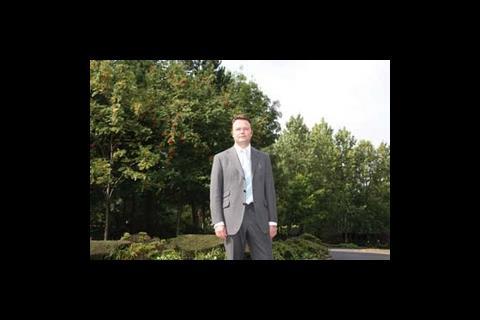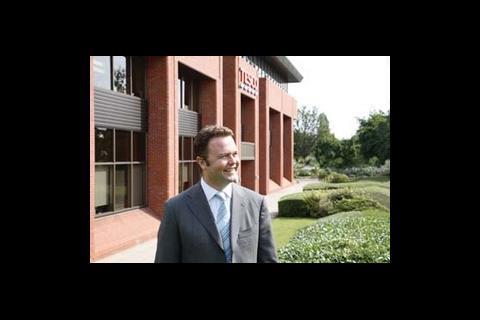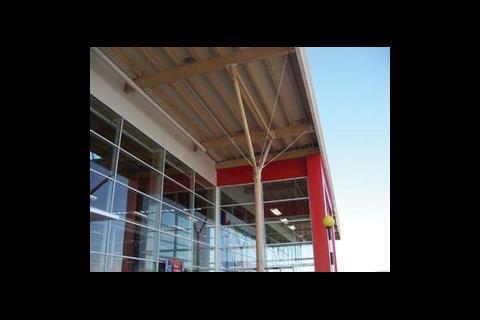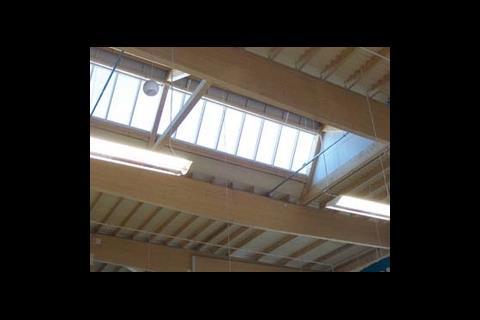Corporate giant Tesco aims to halve the carbon emissions of its stores by 2012 and James Dorling is the man charged with making it happen. He outlines his plan to Stephen Kennett
Over the next 12 years supermarket giant Tesco aims to slash its carbon emissions in half. That’s quite a target given that last year the business generated 2 million tonnes of CO2 and it has no intention of putting its growth plans on hold.
The man with the mission of meeting that target is James Dorling, head of Tesco’s Centre of Environmental Excellence, and he isn’t fazed by the numbers. In fact he says the company is in a better position than most to tackle the problem.
“For most businesses their property portfolio won’t change a great deal. They might build a new office every 10 or 15 years, but we have a substantial build programme and that means we have the opportunity to try out new ways of design and technologies to understand what we can achieve,” he says.
Dorling won’t say how many stores are planned over the coming year but there are already nearly 1800 worldwide, more than 1200 of which are in the UK. These range from small Express shops (up to 280m2 in area), to the 5575m2-plus Extra stores where shoppers can buy electrical goods and clothing as well as groceries. These are being built at the rate of about 20 a year.
The potential for trialling new technologies and design becomes clear when Dorling explains that over the next five years every one of these stores will be refurbished, extended or rebuilt.
Tesco began looking seriously at its energy consumption three years ago. The starting point was a new store in the market town of Diss in Norfolk. The aim here was to pioneer energy saving initiatives that could potentially be rolled out across the chain. Against a backdrop of escalating fuel costs, the initiative was a timely one.
“What the rising energy prices did was make it really clear to us the levels we were consuming. It was only really then that energy started putting its head above the parapet if you like,” Dorling says.
At Diss, Tesco managed a 29% saving on the energy consumption of a standard store relatively easily using a mix of behavioural as well as technical and design measures. More efficient lighting with PIR control, redesigned fridges to keep cold air in, more efficient ovens, cold aisle air retrieval systems and efficient CO2 refrigeration systems were all part of the package.
Hot on the heels of Diss came another experimental store in Swansea, Wales. Energy use here was slashed by 38%. “What we found was that we could reach these targets quite straightforwardly and quickly,” says Dorling. “It gave us a grasp on what we could achieve.”
On the basis of these two schemes Tesco set itself the goal of reducing the average energy consumption of its supermarkets by 50% by 2010, compared with 2000 figures. Despite the talk of halving energy consumption, Dorling will not reveal any actual energy consumption figures, although he says these exist for ‘internal purposes”.
He is confident they’ll achieve this target ahead of schedule, most likely by 2008, but cutting energy consumption is only half of the story. His longer-term objective is to look holistically at the entire carbon footprint of the retailer’s estate.
“We’re looking at all areas: design, construction and energy,” he says. “The greatest piece of leverage in reducing the carbon footprint is our build. If you build in the right natural light, you insulate it properly, be clever about the way you lay things out, then you’re suddenly making a dramatic change to your carbon footprint.”
In spring, Tesco opened another pioneering store in Shrewsbury, Shropshire. The aim here was to reduce carbon emissions by 60% compared with a standard store. For the first time the company began looking at the embodied energy of the building, but quickly hit problems. Although Dorling was keen to evaluate everything from the structure through to the fit-out, he says there weren’t the tools available to allow them to easily understand what the embodied carbon was.
We’re going to have to do something drastic to our existing estate
Consultant White Young Green was brought in to help measure the embodied energy of the key elements, which led to use of a timber frame rather than the usual steel structural frame. Timber was also used for the roof purlins, walls were plywood and signage was made out of wood from sustainable sources (see box story below).
“A classic conundrum is steel or timber in the frame of a store,” says Dorling. “Sixty percent of steel on average is recycled. Timber from a sustainable source has a fantastic carbon saving but is less recyclable so it is that balance that we are trying to work out.”
It’s estimated that changing the key components led to a reduction of about 20% in embodied energy at Shrewsbury. “I think if we had been able to measure every single aspect, the further changes we made would have upped that up considerably,” Dorling says.
This is the next step. Working with organisations such as WRAP (the body set up to encurgae businesses to recycle and minimise waste) and BRE, Dorling is looking to understand the optimum use of materials for the stores and to come up with rules of thumb that will allow him, and the wider design team, to make a quick call on which materials and products to specify.
“We’re not looking to know the amount of carbon to the last 0.7 of a gram,” he says. “We’re talking about what do we roughly think it is. Is it high, is it low on the scale?”
Design toolkit
This is just one of the elements in the toolkit he is developing for design teams to incorporate into all stores across Tesco’s property portfolio. “In the short term we want to get as many of these initiatives that we’ve developed in these stores into our existing estate and our new stores,” Dorling says.” In the medium term we want to make sure we’ve got the process in place that allows the initiatives to be put into the stores to achieve the most optimum efficiency and in the long term to develop a format for our stores.
“In new stores you tend to reach a ceiling unless you go back to basics and redesign the store, so we want to understand from redesigning it what we can achieve. We’re doing that at the moment but of course the gestation periods are long in these things. While the format we’re aiming for will incorporate the optimum combination of design, construction and energy, it won’t be a definitive blueprint.
“You’re always going to have to tailor that to a particular site and a particular environment. We’ll never get to point where we have a format and we’ll say ‘I don’t care what you say, architect, we’re doing it like that’.”
But the existing stores and distribution centres are the biggest hurdle. “To meet the target of a 50% reduction we’re going to have to do something even more drastic to our existing estate,” Dorling says. Early next year he aims to open an extended store where the carbon footprint will be half that of the original.
To achieve this, Tesco is working with BRE and engineering consultant Scott Wilson, to develop another element for the toolkit that will enable it to benchmark its entire estate for sustainability. Based on BRE’s Energy Assessment Methodology (BREEAM), it will allow the supermarket to create a baseline from which it can begin to improve energy consumption and assess sustainability.
“So for example, if you’re in a valley and one of the initiatives is wind turbines, the energy saving will be minimal and the tool allows you to understand that that’s not the best choice for that site,” Dorling says.
“A cold air retrieval system, on the other hand, might be awarded a total of five credits for energy efficiency and embodied energy. That will give us the toolkit we need to really accelerate reducing the carbon footprint in our existing estate.”
Source
Building Sustainable Design



























No comments yet